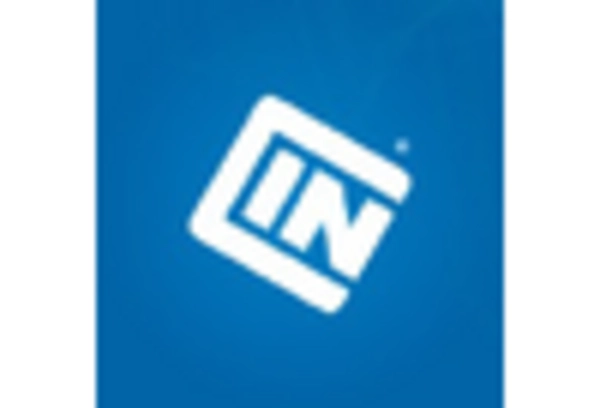Rising Demand for Hybrid Events
The Virtual Event Platform Market is experiencing a notable increase in demand for hybrid events, which combine in-person and virtual experiences. This trend appears to be driven by organizations seeking to maximize audience reach while accommodating diverse preferences. According to recent data, approximately 70 percent of event organizers are now incorporating hybrid formats into their strategies. This shift not only enhances engagement but also allows for greater flexibility in attendance. As a result, the Virtual Event Platform Market is likely to see a surge in platforms that facilitate seamless integration of both physical and digital components, catering to the evolving needs of event planners and attendees alike.
Expansion of Global Reach for Events
The Virtual Event Platform Market is witnessing an expansion of global reach, as organizations recognize the potential to engage audiences beyond geographical limitations. With the ability to host events that attract participants from various regions, companies are leveraging virtual platforms to tap into new markets. Recent statistics reveal that 80 percent of event organizers report increased attendance from international participants when utilizing virtual formats. This trend suggests that the Virtual Event Platform Market will continue to grow, as businesses seek to capitalize on the opportunities presented by a broader audience base, ultimately enhancing their brand visibility and market presence.
Increased Investment in Event Technology
Investment in event technology is on the rise, significantly impacting the Virtual Event Platform Market. Organizations are allocating larger budgets to enhance their virtual event capabilities, with a reported increase of 40 percent in spending on event technology solutions over the past year. This trend indicates a growing recognition of the value that advanced platforms bring to event execution, including improved attendee engagement and streamlined operations. As companies continue to prioritize technology in their event strategies, the Virtual Event Platform Market is expected to evolve, with providers offering more sophisticated tools and features to meet these demands.
Shift Towards Sustainable Event Practices
Sustainability is becoming a focal point in the planning of events, influencing the Virtual Event Platform Market. Organizations are increasingly seeking eco-friendly solutions that minimize their carbon footprint, leading to a rise in virtual events as a sustainable alternative to traditional gatherings. Data indicates that 55 percent of event planners are prioritizing sustainability in their event strategies. This shift is likely to encourage the development of platforms that not only support virtual events but also promote sustainable practices, such as carbon offsetting and digital materials, thereby aligning with the values of environmentally conscious attendees.
Growing Importance of Networking Opportunities
Networking remains a critical component of events, and the Virtual Event Platform Market is adapting to this need by enhancing networking features. Platforms are increasingly incorporating tools such as virtual lounges, breakout rooms, and AI-driven matchmaking to facilitate meaningful connections among participants. Data suggests that 65 percent of attendees prioritize networking opportunities when choosing events. This emphasis on networking is likely to drive innovation within the Virtual Event Platform Market, as providers strive to create immersive environments that foster collaboration and relationship-building, ultimately enhancing the overall event experience.


















Leave a Comment